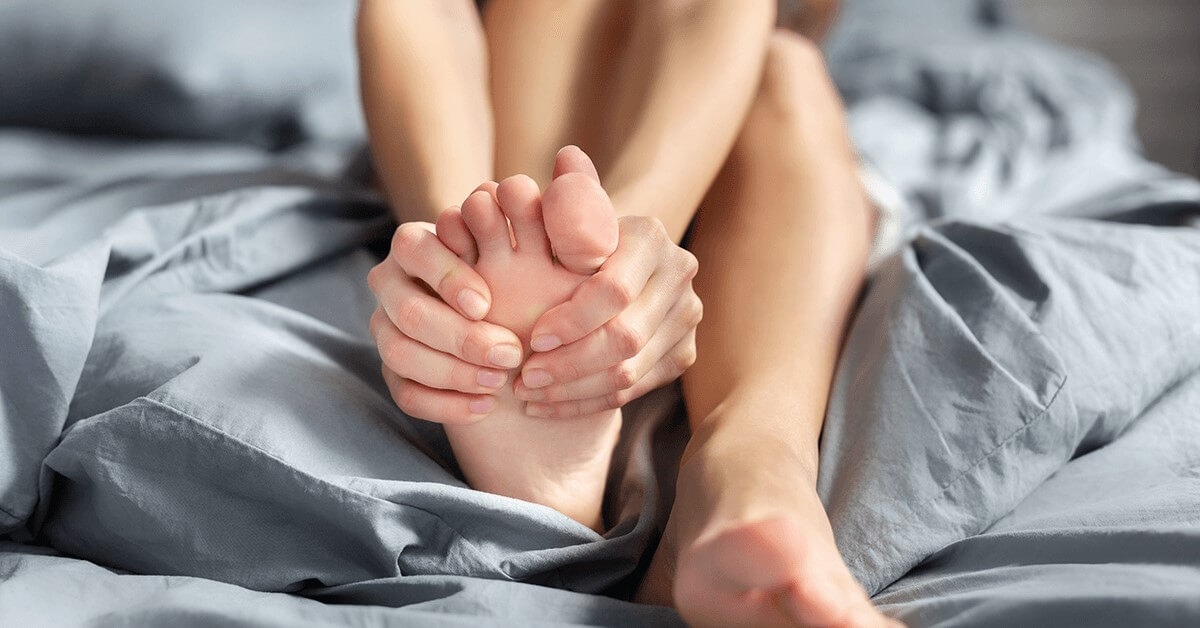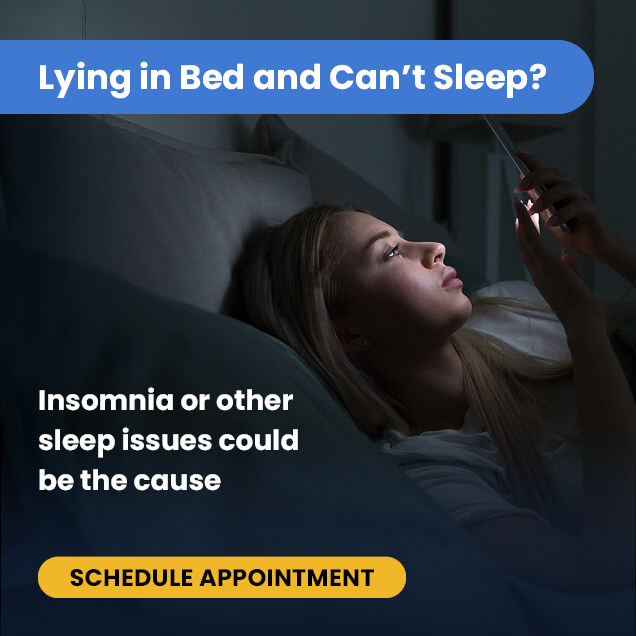Criteria for Diagnosis | Symptoms | Epidemiology | Causes | Differential Diagnosis | Evaluation | Management
Overview
Nocturnal leg cramps, also called sleep-related leg cramps (SRLC), occur while you’re asleep and usually affect your calf or foot. You may be awakened by sudden sharp pain and muscle tightness in either your legs or feet and sometimes both.
The duration of these cramps varies but typically does not exceed ten minutes, typically lasting from a couple of seconds to ten minutes. [1]
Criteria for Diagnosis
Researchers carried out a study to determine the seven diagnostic characteristics of SRLC:
● Intense pain
● Period of duration from seconds to a maximum of ten minutes
● Location in calf or foot
● Location is occasionally in thigh or hamstrings
● Persistent subsequent pain
● Sleep disruption and distress
These clinical characteristics will help your doctor make an accurate diagnosis, differentiating SRLC from other sleep-related musculoskeletal conditions.[2]
Symptoms
The signs and symptoms of SRLC are the same as noted above in the diagnostic criteria. If you are affected by SRLC, here are a few additional symptoms you may notice:
● Sudden muscle tightness, more frequently affecting the calf, foot, or thigh [3]
● Cramps that persist from seconds to minutes
● Vigorously stretching the cramping muscles stops the pain [4]
● Soreness primarily in the thigh that can last over 24 hours after the cramps subside [5]
● Pain typically occurs while you are asleep and causes arousal from sleep
● Sleep disturbance or insomnia
● Daytime fatigue [6]
Epidemiology
SRLC affects roughly 40 percent of those over 50 years of age. Research shows that as you age, you may experience an increased frequency of SRLC. These cramps affect both genders. [7]
Though infrequent, there have been reports of SRLC affecting approximately 7 percent of children and adolescents, but more so those at around sixteen to eighteen years of age. Of note, there have been no reported cases in anyone below eight years old. [8]
Causes
The cause of SRLC may be unknown, and that is quite common. However, SRLC can be resultant of medical conditions and other factors. These can include but are not limited to:
● Neurologic disorders (conditions affecting the brain and nerves, like Parkinson’s disease)
● Metabolic disorders (like diabetes)
● Insufficient magnesium while pregnant
● Fluctuations in your body’s fluid balance, which can happen if taking diuretics (water pills)
● Undergoing dialysis
● Excessive sweating
● Sitting in an awkward position or sitting too long in one position
● Standing or walking a lot on concrete floors
● Exercising
● Having an abnormal leg or foot structure (flat feet or a knee that bends in the wrong direction) [9]
Differential Diagnosis
As with many illnesses, your doctor has to examine your symptoms and other diagnostic tests to make the correct diagnosis, as SRLC may display the same characteristics as other conditions. Here are some conditions that have similar symptoms to SRLC:
1) Sleep Starts and Myoclonic Jerks
These are sudden jittery and painless movements of the limbs during sleep.
2) Restless Legs Syndrome (RLS)
This condition occurs while resting and gives more of an uncomfortable cramping feeling rather than painful cramps. Notwithstanding, it can sometimes become painful.
3) Peripheral Vascular Disease
It causes cramp-like leg pain that affects the calf more often than the thigh or buttocks. This pain can begin even while the leg is in use; however, resting the leg provides pain relief.
4) Periodic Limb Movements of Sleep
While you are asleep, you may experience involuntary, jerking leg movements, otherwise known as nocturnal myoclonus. This jerking occurs at night, is not painful or cramping, and does not cause or involve muscle tightening. [10]
Evaluation
Your doctor may use a physical examination and look at your medical history for a diagnosis.
The doctor takes a history of your leg cramps to determine if your symptoms are related to SRLC.
Providing a complete history will also help your healthcare provider identify factors that may be inducing the condition.
Your doctor should take a look at and examine your legs and feet to identify anything that may be indicative of an underlying cause.
However, in some instances, the diagnosis may not be evident, and as such, they may use laboratory studies to look at abnormalities within the blood, such as increases or decreases in potassium, sodium, iron, calcium, and electrolytes. [11]
Management
Treatment for SRLC will vary from person to person as it is dependent on the cause of the cramps. In many cases, your doctor will use different forms of treatment until the most beneficial one is found. Some of those treatment options are:
1) Medication
Your doctor may prescribe drugs to calm your nerves, relax your muscles, or help you sleep. However, medications are used for SRLC only when other types of treatments fail.
2) Lifestyle Changes
Your clinician may encourage you to become more active and suggest activities, like walking. They may also recommend consuming more liquid and wearing good supportive shoes.
3) Supplements
Taking supplemental minerals or vitamins is one way to replace or improve levels. This method can be effective against SRLC as the condition often arises from the depletion of your minerals or vitamins.
Additionally, your doctor may have you slowly taper off your use of medications that are inducing nocturnal leg cramps. [12]
SRLC may not be a life-threatening condition, so many people will delay having symptoms checked by a doctor. However, it can affect your quality of life since it causes sleep disturbances and daytime sleepiness.
Also, this condition is typically indicative that you are being affected by something else, like an underlying condition that needs attention or a medication you are currently using. As such, we encourage you to seek medical attention as soon as you begin to experience any of the symptoms described above.
References:
- UpToDate. (2021). Uptodate.com. https://www.uptodate.com/contents/nocturnal-nighttime-leg-cramps-the-basics
- Hallegraeff, J., de Greef, M., Krijnen, W., & van der Schans, C. (2017). Criteria in diagnosing nocturnal leg cramps: a systematic review. BMC Family Practice, 18(1). https://doi.org/10.1186/s12875-017-0600-x
- Allen, R. E., & Kirby, K. A. (2012). Nocturnal leg cramps. American family physician, 86(4), 350–355. https://pubmed.ncbi.nlm.nih.gov/22963024/
- Monderer, R. S., Wu, W. P., & Thorpy, M. J. (2010). Nocturnal Leg Cramps. Current Neurology and Neuroscience Reports, 10(1), 53–59. https://doi.org/10.1007/s11910-009-0079-5
- Miller, T. M., & Layzer, R. B. (2005). Muscle cramps. Muscle & Nerve, 32(4), 431–442. https://doi.org/10.1002/mus.20341
- American Academy of Sleep Medicine. Sleep-related leg cramps. In: International classification of sleep disorders, 3rd ed., American Academy of Sleep Medicine, Darien, IL 2014. P.299-303. no abstract available
- Grandner, M. A., & Winkelman, J. W. (2017). Nocturnal leg cramps: Prevalence and associations with demographics, sleep disturbance symptoms, medical conditions, and cardiometabolic risk factors. PLOS ONE, 12(6), e0178465. https://doi.org/10.1371/journal.pone.0178465
- Leung, A. K., Wong, B. E., Chan, P. Y., & Cho, H. Y. (1999). Nocturnal leg cramps in children: incidence and clinical characteristics. Journal of the National Medical Association, 91(6), 329–332. https://pubmed.ncbi.nlm.nih.gov/10388258/
- Parisi, L., Pierelli, F., Amabile, G., Valente, G., Calandriello, E., Fattapposta, F., Rossi, P., & Serrao, M. (2003). Muscular cramps: proposals for a new classification. Acta Neurologica Scandinavica, 107(3), 176–186. https://doi.org/10.1034/j.1600-0404.2003.01289.x
- McGee S. R. (1990). Muscle cramps. Archives of internal medicine, 150(3), 511–518. https://pubmed.ncbi.nlm.nih.gov/2178579/
- Allen, R. E., & Kirby, K. A. (2012). Nocturnal leg cramps. American family physician, 86(4), 350–355. https://pubmed.ncbi.nlm.nih.gov/22963024/
- Davison S. Standing: A Good Remedy. JAMA. 1984;252(24):3367. doi:10.1001/jama.1984.03350240017022






